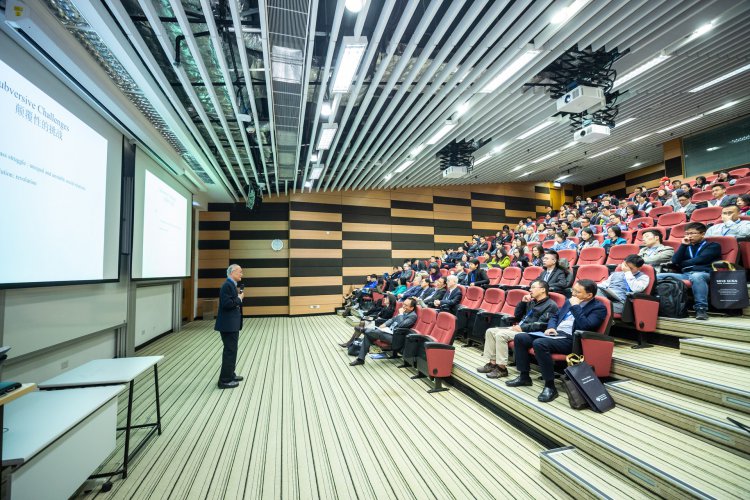The next time we get the opportunity to train, let us try not to just present the slides
A presentation is not necessarily a training session. But training, in essence, is a presentation. Before I confuse you any further, let me set the context right.
Purpose of Presentation
A presentation is an act of giving someone something. That someone is usually your audience. Your audience can consist of observers and/or participants. The observers are spectators, they just watch the events unfold. The participants are the ones actively involved – voluntarily or otherwise, in the process of unfolding the events. What we as trainers want to do is to ensure that our audience consists of more of the latter. Active participation in a presentation is a sure-fire way of enabling learning. Learning, as a takeaway is the core of all training session.
However, a presentation generally is not always about learning the lesson. That act of giving ‘something’ to the audience can be a variety of things, depending on the intent of the presentation. Some presentation aims to entertain, to persuade, to inform, or to educate. We shall not discuss the presentation in the light of entertaining or persuasion since it is clearly not the main goal of presentation in a training context. The confusion usually arises in differentiating the intent of training, whether to inform or to educate.
To inform is to make aware of certain information, facts, or data by telling it to the unknown. To educate, on the other hand, is to provide the audience with a level of comprehension on the subject matter. It goes beyond just stating facts, it involves strategies to make the audience at least remember and maybe, understand. These strategies may include providing instructions, allowing the practice, and even perhaps assessing the level of absorption by the audience.
We can safely sum it this way: training is a presentation with the intention of educating. And as we have discussed, the best way to do this is to incorporate more interaction with the audience, specifically the participants. Only then, we have a higher chance of imparting the lessons the way we intended.
But how can we do this consciously? How can we make sure we do not fall under the trap of merely presenting when we need to train?
The Trainer’s Mantra
I am sure many of us have come across different variations of this popular quote:
“Tell me and I forget, show me and I may remember, involve me and I’ll understand”
It is mostly attributed to Benjamin Franklin, Xunzi, and various other sources with similar ideas – people need to be engaged by more than one sensory stimuli to make the learning effective. The hypothesis is that our training needs to stimulate a variety of the human senses rather than just one or two like “show and tell” – a common expression used to describe a presentation. This is what I call the “Trainer’s Mantra” – plan from the beginning to involve, rather than just showing and telling.
The VARK Learning Style
This was further explored by Neil D. Fleming a New Zealand educator who worked on the VARK model (1987) and help shape the understanding of learning styles and teaching strategies. In short, VARK represents the sensory modalities divided into the four (4) dimensions of Visual, Auditory, Read/write and Kinesthetics. Although there are still some arguments on the validity of this concept, I consider it to be a good litmus test to ensure that us trainers plan for better engagement of the audience by ensuring our training delivery and materials prepared appeals to all four (4) dimensions.
For the Visual dimension, we must ensure that our training materials are easy on the eyes. Strategic use of colours, shapes, and fonts on our training slides. Probably just use key words rather than have a full paragraph on the slides. Use icons, symbols, diagrams, charts, mind maps, and high-resolution pictures. Colour code the notes, underline and highlight important take-away lessons.
For the Auditory dimension, spend time to have an open discussion on the main ideas. Give exercises which involves group work to allow participants to share different perspectives by talking and listening to one another. Have a question-and-answer session to clarify any concerns and recap by repeating key information.
Trainers must also consider the readers in the audience. Since they prefer text and learns best by reading and writing, allow them to have a comprehensive training manual to complement the training delivery. Organise the notes into a list with bullet-points, give some space for them to scribble or better still, make the training notes into semi-workbooks where they can explore further beyond the confinement of the training room.
Last but not least, add some physical activities where necessary. Be sure to make it appropriate and purposeful – not just for the sake of having some “fun time” with the audience. Kinesthetics loves to move around and do hands-on work, so allow them some space and opportunity to interact by injecting experiential learning activities and gamify the learning process. Take frequent short breaks too, this ensures their level of energy is managed during the training session.
Aim for Variety
So, if we put the four (4) dimensions of VARK as 100% in total, telling only appeals to one (1) dimension and that translates to only aiming for 25% effectiveness. We can do better by showing and explaining – two (2) dimensions or 50%, but if we were to make sure that our training slides are visually appealing, our notes are comprehensive, our session is filled with interactions and hands-on activities, I am certain we could easily hit more than 75% chance of our training session being effective.
At the end of the day, the major difference between just presenting a topic and training is in planning for the systematic learning process by considering our audience’s learning preferences before prioritising our own teaching style.
The next time we get the opportunity to train, let us try not to just present the slides.
















